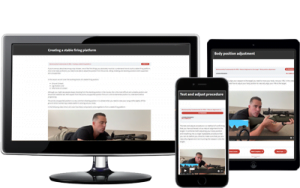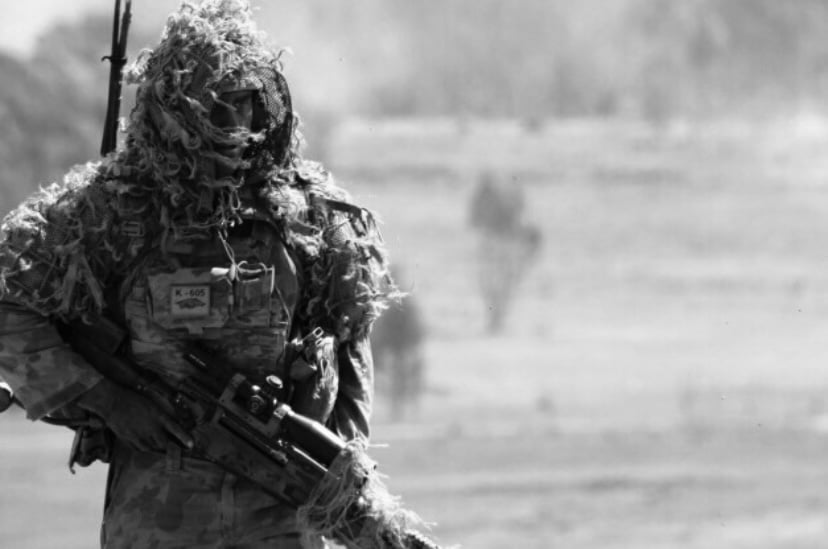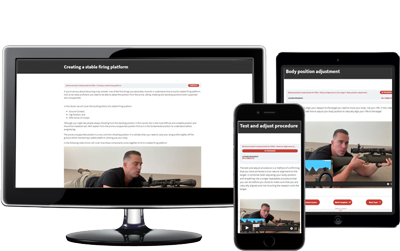No products in the cart.


If you’re a beginner when it comes to firearms, proper training and practice is essential. Not only will it ensure your safety, but it will also boost your confidence and skill level. In this article, we will cover 10 essential firearm training drills that will help beginners build a strong foundation for their shooting skills.
Before diving into the drills, it’s important to understand why firearm training is crucial for beginners. First and foremost, it ensures safety and responsibility when handling firearms. Proper training also helps build a strong foundation of shooting skills, which can lead to improved accuracy and proficiency.
A strong foundation is necessary for any skill to be developed. When it comes to firearms, a strong foundation includes proper education on the parts of a firearm, understanding how the firearm operates, and familiarizing oneself with firearm safety rules and etiquette.
It is important to note that firearm safety rules are not only for the range, but also for everyday life. Knowing how to properly handle firearms can prevent accidents from occurring, especially in situations where firearms are present. It is also important to understand the laws and regulations surrounding firearms in your specific area, as they can vary from state to state.
Firearms can be dangerous if not handled properly. Therefore, it is important to ensure the safety and responsibility of handling firearms. Safety rules include always treating firearms as if they are loaded, keeping your finger off the trigger until ready to shoot, and being aware of your surroundings at all times.
One of the most important aspects of firearm safety is to never point a firearm at anything you do not intend to shoot. This rule should always be followed, even if you believe the firearm is unloaded. It is also important to never shoot without a proper backstop, as bullets can travel long distances and cause harm to others.
Through proper training and practice, beginners can build their confidence and skill level. Confidence will come from understanding the firearm, its components, and how to handle it safely. Skill level will improve with regular practice and mastering the fundamentals of shooting techniques.
It is important to note that practice does not always mean shooting live ammunition. Dry firing, which is practicing without live ammunition, can be just as effective in improving shooting skills. It allows for the shooter to focus on their form and technique, without the distraction of loud noises and recoil.
Overall, firearm training is crucial for beginners to ensure safety, responsibility, and the development of strong shooting skills. It is important to seek out proper training from a qualified instructor, and to always follow firearm safety rules and regulations.
Before heading to your first training session, there are a few things you should do to prepare. This includes choosing the right firearm, gathering necessary equipment, and understanding range etiquette and safety rules.
Firearm training is an important step towards becoming a responsible gun owner. It’s essential to learn how to use your firearm safely and effectively. Here are some tips to help you prepare for your first training session.
Choosing the right firearm can seem overwhelming for beginners. However, it’s important to choose a firearm that fits your purpose, fits your hand comfortably, and that you can handle safely. Factors to consider include caliber, weight, and size.
When selecting a firearm, it’s important to consider what you’ll be using it for. Will you be using it for self-defense, hunting, or competition shooting? This will help you determine the caliber and size of the firearm that will work best for you. It’s also important to choose a firearm that you can handle safely. If you’re new to firearms, consider starting with a smaller caliber handgun or a .22 rifle to build your confidence.
Aside from the firearm, there are other pieces of equipment necessary for firearm training. These include eye and ear protection, targets, and cleaning supplies for after your session. It’s important to have everything you need before heading to the range.
Eye and ear protection are essential for your safety. The sound of gunfire can be damaging to your hearing, so it’s important to wear earplugs or earmuffs to protect your ears. Eye protection will protect your eyes from debris and spent casings. Targets are necessary for practice, and cleaning supplies will help you maintain your firearm and keep it in good condition.
At the range, there will be rules and etiquette to follow. This may include dress code, where to stand, and how to handle your firearm. Be sure to ask questions and understand the rules before starting your session.
Range safety is critical. Always keep your firearm pointed in a safe direction, and never point it at anyone. Keep your finger off the trigger until you’re ready to shoot. Always follow the range officer’s instructions and be aware of your surroundings. Dress appropriately, wear closed-toe shoes, and avoid loose clothing that could get caught in your firearm.
By following these tips, you’ll be well-prepared for your first training session. Remember, safety should always be your top priority when handling firearms. Happy shooting!
Once you have the basics down, it’s time to learn the fundamental shooting techniques. This includes proper grip and stance, sight alignment and trigger control, and breathing and follow-through.
The first step in mastering technique is having the right grip and stance. A proper grip ensures control of the firearm while firing, which is essential for accuracy. The grip should be firm but not too tight, and the fingers should be wrapped around the handle of the firearm. The support hand should be placed under the trigger hand to provide additional support and control.
A proper stance ensures a stable base for shooting. The feet should be shoulder-width apart, and the shooter should stand with their body weight evenly distributed between both feet. The knees should be slightly bent, and the shooter should lean slightly forward. This stance provides a stable platform for shooting and helps absorb recoil.
Practice and adjust until you find what feels right for you. Everyone’s body is different, so it’s important to find a grip and stance that works best for your body type and shooting style.
Sight alignment and trigger control are critical for accuracy. The sight should be in alignment with the target, and the shooter should focus on the front sight. The rear sight should be slightly blurred, and the target should be in focus. This allows the shooter to see the alignment of the sights and the target simultaneously.
The trigger should be pulled smoothly and steadily, without jerking or flinching. The shooter should use the pad of their index finger to pull the trigger, and the trigger should be pulled straight back. The shooter should focus on the front sight while pulling the trigger, and the trigger should be pulled until the shot breaks.
Proper practice will improve accuracy and proficiency. It’s important to practice sight alignment and trigger control regularly to develop muscle memory and improve accuracy.
Breathing and follow-through are often overlooked, yet are essential for accuracy. It’s important to exhale before pulling the trigger to reduce movement caused by breathing. The shooter should take a deep breath, exhale half of it, and hold their breath while pulling the trigger.
Follow-through is also important for accuracy. After the shot is fired, the shooter should maintain their grip and stance and keep their focus on the target. This allows the shooter to see where the shot landed and make any necessary adjustments for the next shot.
By practicing breathing and follow-through, the shooter can improve their accuracy and control of the firearm.
Once you have the basics of shooting technique down, it’s time to practice with dry fire drills. Dry fire allows you to practice techniques without live ammunition. These drills can be done at home or at the range.
The wall drill is a great way to help improve technique and control. Stand facing a wall with your firearm pointed at the wall. Practice pulling the trigger smoothly while maintaining proper grip and stance. This drill helps you to focus on the fundamentals of shooting, such as trigger control and proper grip, without the distractions of live fire. It’s a great way to build muscle memory and improve your accuracy.
The trigger reset drill is another effective way to improve trigger control and accuracy. After firing a shot, take your finger off the trigger and reset it without releasing the trigger. Repeat until comfortable with the technique. This drill helps you to develop a smooth trigger pull and improve your accuracy by reducing the amount of movement between shots. It’s a great way to build muscle memory and improve your shooting skills.
The balancing a coin drill is a unique and challenging way to improve your grip and accuracy. Place a coin on top of your firearm and practice keeping the coin balanced while firing. This will ensure proper grip and control of the firearm. This drill helps you to develop a steady hand and improve your accuracy by teaching you to maintain a consistent grip and stance. It’s a fun and challenging way to improve your shooting skills.
But these are just a few of the many dry fire drills you can practice to improve your shooting skills. Other drills include shooting from different positions, shooting with your non-dominant hand, and shooting with a timer. The key is to practice regularly and focus on the fundamentals of shooting.
With these 10 essential training drills for beginners, you’ll be on your way to building a strong foundation of firearm skills. Remember to always practice safety and responsibility when handling firearms, and continue to seek education and training opportunities to improve your proficiency.

 Find Out More
Find Out More